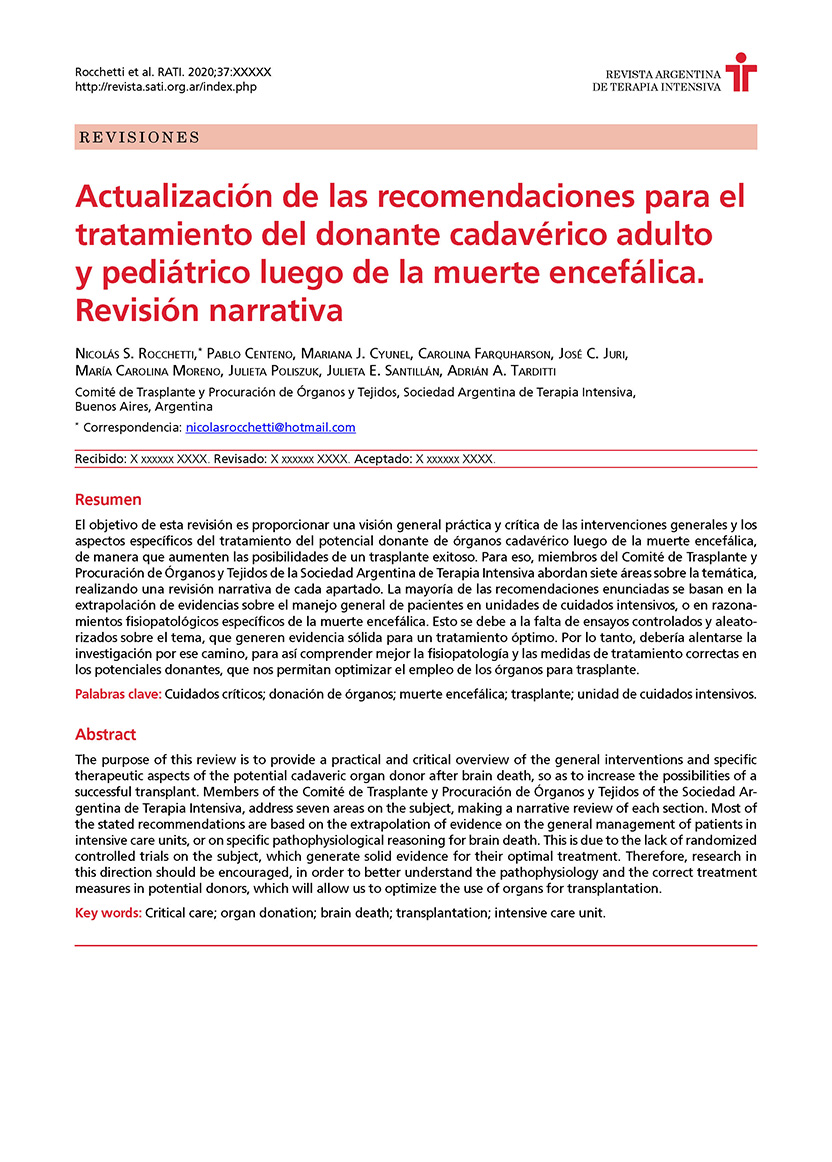Resumen
El objetivo de esta revisión es proporcionar una visión general práctica y crítica de las intervenciones generales y aspectos específicos del tratamiento del potencial donante de órganos cadavérico luego de la muerte encefálica (ME), de manera que aumenten las posibilidades de un trasplante exitoso. Para eso, miembros del Comité de Trasplante y Procuración de Órganos y Tejidos de la Sociedad Argentina de Terapia Intensiva abordan siete áreas sobre la temática, realizando una revisión narrativa de cada apartado. La mayoría de las recomendaciones enunciadas se basan en la extrapolación de evidencias sobre el manejo general de pacientes en unidades de cuidados intensivos, o en razonamientos fisiopatológicos específicos de la ME. Esto se debe a la falta de ensayos controlados y aleatorizados sobre la temática, que generen evidencia sólida para el tratamiento óptimo de los mismos. Por lo que debería alentarse la investigación por ese camino, para así comprender mejor la fisiopatología y las medidas de tratamiento correctas en los potenciales donantes, que nos permitan optimizar el empleo de los órganos para trasplante.
La revista no retiene los derechos de reproducción (copyright) por lo que los autores pueden volver a publicar sus trabajos con la sola mención a la fuente original de publicación.

